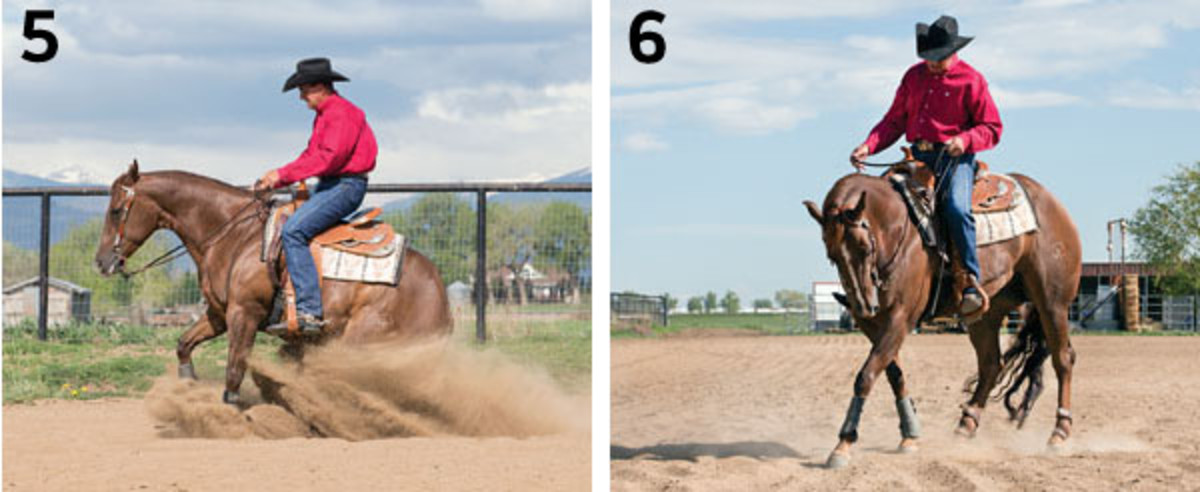The straightness of your stop influences your scores for reining and horsemanship, and it’s also a positive trait for any horse to have, whether or not he competes. Crooked stops are most often caused by one of three things: stiffness in one side or the other; the horse has a preferred lead for his approach and swaps leads right before the stop; or the rider doesn’t sit squarely in the saddle.
Here, I’ll discuss exercises to work on for correcting the first fault that usually impedes stop straightness: stiffness on one side or the other. In these examples, I’ll demonstrate how to work with a horse that hooks to the left when he stops. The first two exercises are for the approach, and the third is for after the stop is complete. Be sure to keep your horse soft and supple on both sides—you don’t want to inadvertently create a problem on one side while you work on the other.
1. With a horse that stops crooked due to stiffness, I start out by getting him to lope freely, soften at the poll, pick his shoulders up, and square his frame, all before I even start working on stops. Once he’s loping freely, I lope down the length of the arena to approach a stop.

2. On my approach, my horse is stiff in his left side. I pick up on the left rein and hold my right rein steady. By picking up my left rein, I can lift my horse’s shoulder and ask him to soften in his poll, neck, and body. If he doesn’t soften during this approach, I won’t ask him to stop. His body must be in proper position before I ask for a stop, otherwise he’ll stop crooked.
3. My horse didn’t soften enough to meet my expectations, so when we reach the end of the arena, I take him back on a circle to the left and go back to the circle work I started with in Photo 1 to regain softness.
4. I’m satisfied enough with his softness to approach a stop. You can see that he’s freely loping down the arena, with his body engaged and no stiffness to either side. His shoulders are up, and I’m not holding him in position—he’s taking care of himself—so he’s ready to stop when we reach the appropriate spot.
5. I bring my horse to a quiet stop, and he maintains proper body position, with his shoulders and hips square and his spine aligned to avoid any drifting.

6. If he’d stopped crooked, I’d back him in a circle to square up his body. Here, I gather up my reins, tip his nose to the outside of my circle with my left hand, and put my right leg on his side to push his left hip out. I begin backing a circle until I feel him straighten up and soften.
7. Then I change directions, and back in a circle the other way, again tipping his nose to the outside and moving his hip out, too. His body should be square, and he’ll keep that frame when we approach our next stop, and when I say, “whoa.”

Steve Schwartzenberger and his wife, Dori, own and operate a breeding and training facility outside Longmont, Colorado. Reining is a family sport, with Steven and Dori training, showing, and judging, and daughters Shevin and Sharee competing in the non-pro. Learn more at ssequine.com/.






